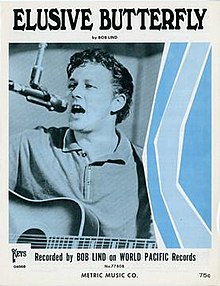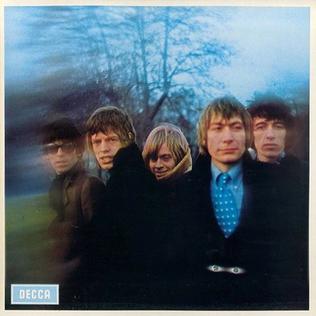
Between the Buttons is the fifth British and seventh American studio album by the English rock band the Rolling Stones, released on 20 January 1967 in the UK and on 10 February in the US. Reflecting the band's brief foray into psychedelia and baroque pop balladry during the era, the album is among their most eclectic works; multi-instrumentalist Brian Jones frequently abandoned his guitar during the sessions in favor of instruments such as organ, marimba, dulcimer, vibraphone and kazoo. Keyboard contributions came from two session players: former Rolling Stones member Ian Stewart and frequent contributor Jack Nitzsche. Between the Buttons would be the last album produced by Andrew Loog Oldham, who had to this point acted as the band's manager and produced all of their albums.
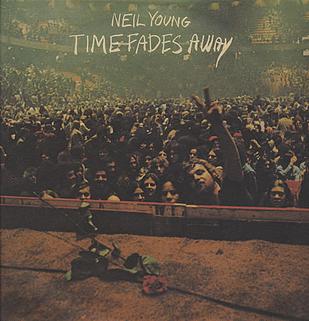
Time Fades Away is a 1973 live album by Canadian-American musician Neil Young. Consisting of previously unreleased material, it was recorded with the Stray Gators on the support tour following 1972's highly successful album Harvest. Due to Young's dissatisfaction with the tour, it was omitted from his catalogue and not released on compact disc until 2017. The album is the first of the so-called "Ditch Trilogy" of albums that Young recorded following the major success of Harvest, whereupon the scope of his success and acclaim became so apparent that Young subsequently experienced alienation from his music and career.

Michael Valentine Doonican was an Irish singer of traditional pop, easy listening and novelty songs, who was noted for his warm and relaxed vocal style.
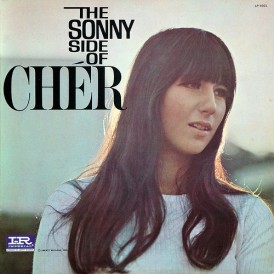
The Sonny Side of Chér is the second studio album by American singer-actress Cher, released on March 28, 1966, by Imperial, as her second album, Cher again collaborated with Sonny Bono and Harold Battiste. The album is by-and-large a covers album and contains two songs written by Bono. The title of the album is a pun on the name of Cher's first husband Sonny Bono. Cher's second successful album of the sixties, it was released on CD in 1992 by EMI together with Cher's first album as a 2fer. In 1995 EMI re-released this 2fer with the album Chér. The last version of the album was released in 2005 only in UK by BGO Records. These editions feature a different track order than the original LP.
"Needles and Pins" is a rock song credited to American writers Jack Nitzsche and Sonny Bono. Jackie DeShannon recorded it in 1963 and other versions followed. The most successful ones were by the Searchers, whose version reached No. 1 on the UK singles chart in 1964, and Smokie, who had a worldwide hit in 1977. Others who recorded the song include the Ramones, Gene Clark, Petula Clark, and Tom Petty and the Heartbreakers with Stevie Nicks.
Robert Neale Lind is an American folk-music singer-lyricist who helped define the 1960s folk rock movement in the U.S. and UK. Lind is well known for his transatlantic hit record, "Elusive Butterfly", which reached number 5 on both the US and UK charts in 1966. Many musicians have recorded songs by Lind, who continues to write, record and perform.

"The Beat Goes On" is a song written and composed by Sonny Bono and recorded by Sonny & Cher. It was issued as a single and appeared on their 1967 album In Case You're in Love. It entered the Billboard Hot 100 chart on January 14, 1967, peaking at number six.

"Surfin' Safari" is a song by American rock band the Beach Boys, written by Brian Wilson and Mike Love. Released as a single with "409" in June 1962, it peaked at number 14 on the Billboard Hot 100. The song also appeared on the 1962 album of the same name.
"If I Were a Carpenter" is a folk song written by Tim Hardin in the 1960s, and re-recorded with commercial success by various artists including Bobby Darin, The Four Tops and Johnny Cash. Hardin's own recording of the piece appeared on his 1967 album Tim Hardin 2. It was one of two songs from that release performed by Hardin at Woodstock in 1969. The song, believed by some to be about male romantic insecurity, is rumored to have been inspired by his love for actress Susan Morss, as well as the construction of Hardin's recording studio.

"Have You Seen Your Mother, Baby, Standing in the Shadow?" is a song by the English rock band the Rolling Stones. Written by Mick Jagger and Keith Richards, it was recorded in the late summer of 1966 during early sessions for what would become their Between the Buttons album. It was the first Stones single to be released simultaneously in both the UK and the US, and reached number five and number nine on those countries' charts, respectively.

"Heart of Stone" is a song by the English rock band the Rolling Stones, credited to the songwriting partnership of Jagger/Richards. London Records first issued it as a single in the United States in December 1964. The song was subsequently included on The Rolling Stones, Now! and Out of Our Heads.

"Rag Doll" is a popular song written by Bob Crewe and Bob Gaudio. It was recorded by the Four Seasons and released as a single in 1964.

"Cherish" is a pop song written by Terry Kirkman and recorded by the Association. Released in 1966, the song reached number one on the U.S. Billboard Hot 100 in September of that year and remained in the top position for three weeks. Billboard ranked the record as the No. 7 song of 1966, and later as No. 2, after a revision of the year-end charts. It was certified Gold by the RIAA in the US in 1966. In Canada, the song also reached number one.
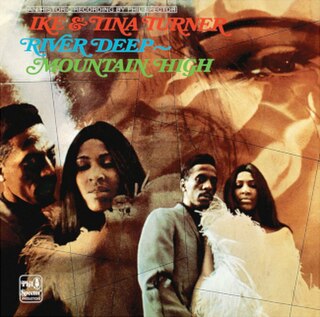
River Deep – Mountain High is a studio album by Ike & Tina Turner. It was originally released by London Records in the UK in 1966, and later A&M Records in the US in 1969. In 2017, Pitchfork ranked it at No. 40 on their list of the 200 Best Albums of the 1960s.

"(You're My) Soul and Inspiration" is a song by American pop duo the Righteous Brothers. It was the group's first hit after leaving their long-time producer Phil Spector. The song was written by Barry Mann and Cynthia Weil, who also wrote the group's first hit "You've Lost That Lovin' Feelin'" along with Phil Spector. It is the title track of their album. The single peaked at No. 1 on the US Billboard Hot 100, and reached No. 15 on the UK Singles Chart. Billboard ranked the record as the No. 3 single for 1966.
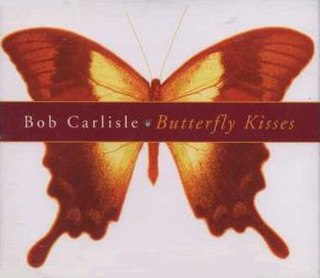
"Butterfly Kisses" is a song written by Bob Carlisle and Randy Thomas from Carlisle's third studio album Butterfly Kisses . The song was written for Carlisle's daughter Brooke's 16th birthday. Carlisle also wrote a journal, Butterfly Kisses for Fathers and Their Daughters. The last track of the Butterfly Kisses is a country remix of the song, where instruments like the Pedal Steel Guitar and Fiddle are added as instruments. There have been many cover versions of the song including Raybon Brothers, Jeff Carson, Westlife and Cliff Richard.
"Silver Threads and Golden Needles" is a country song written by Dick Reynolds and Jack Rhodes. It was first recorded by Wanda Jackson in 1956. The original lyrics, as performed by Jackson, contain a verse not usually included in later versions, which also often differed in other minor details.

I Couldn't Live Without Your Love is a Petula Clark album released in the United States and the UK in September 1966. Clark's fifth US album release, I Couldn't Live Without Your Love was the first Petula Clark album to include creative personnel besides Tony Hatch, who produced the album and arranged some of the tracks, along with Johnny Harris.

So Nice is an album by American pop singer Johnny Mathis released through Mercury Records on September 16, 1966. The singer included a trio of musical numbers from Man of La Mancha in this set as well as songs from Funny Girl, Kismet, and On a Clear Day You Can See Forever, shows that he had recognized on previous releases. Mathis also covers recent imports from France and Brazil and offers a rendition of a 1944 hit record as part of the mix.
